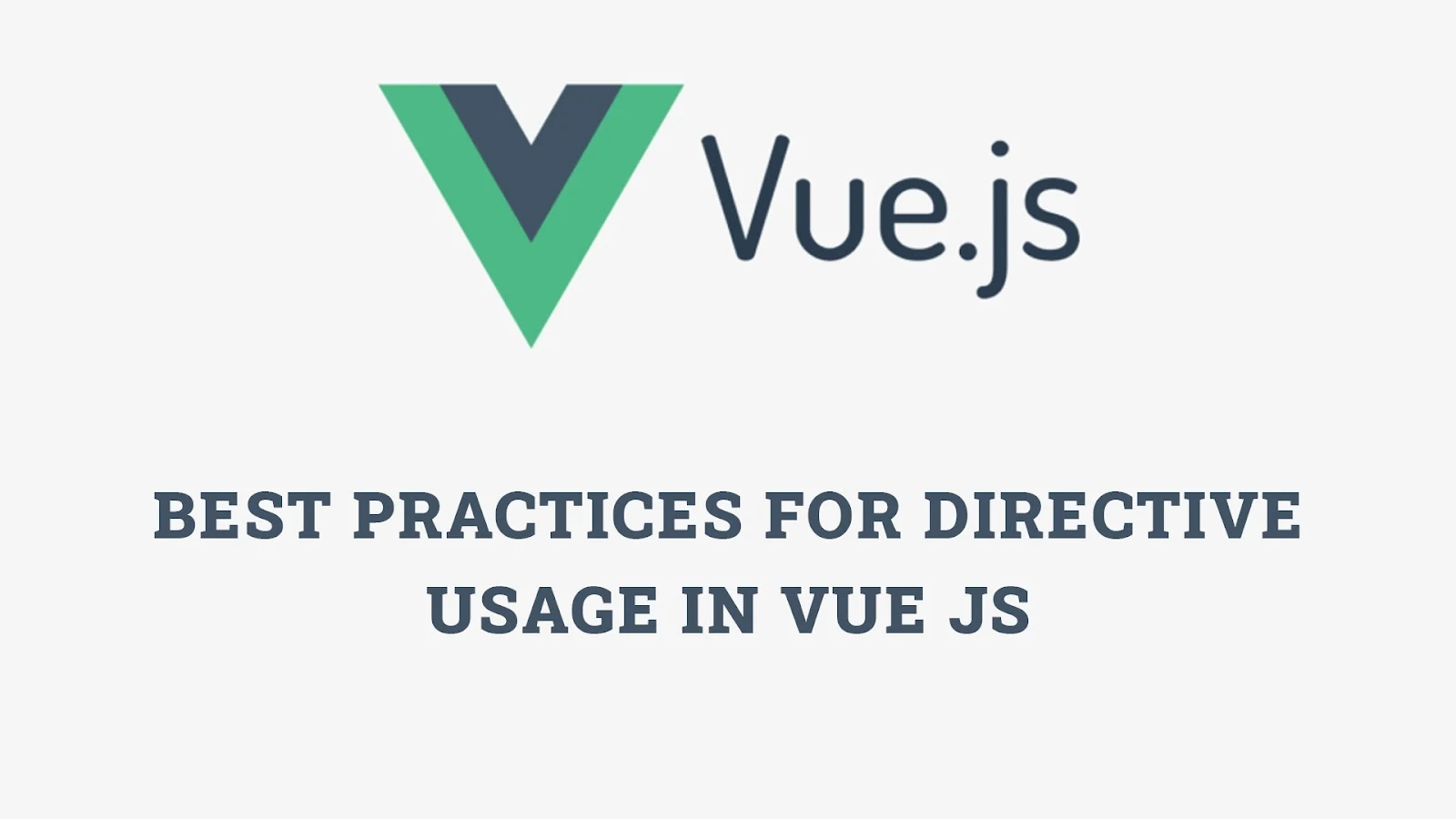Introduction
Directives are one of the most powerful features in Vue.js, allowing developers to extend the functionality of their applications by attaching behaviors to DOM elements. Using directives effectively can lead to more maintainable, modular, and efficient code. This article explores the best practices for directive usage in Vue.js, providing detailed explanations and examples to ensure you can harness their full potential.
Keeping Directives Simple and Focused
One of the key principles in directive usage is to keep them simple and focused. A directive should do one thing and do it well. This makes it easier to understand, test, and maintain.
Example: Simple Click Outside Directive
// HTML file with simple click outside directive example
<!DOCTYPE html>
<html>
<head>
<title>Simple Click Outside Directive Example</title>
<script src="https://unpkg.com/vue@next"></script>
<script>
const app = Vue.createApp({});
app.directive('click-outside', {
beforeMount(el, binding) {
el.clickOutsideEvent = function(event) {
if (!(el === event.target || el.contains(event.target))) {
binding.value(event);
}
};
document.body.addEventListener('click', el.clickOutsideEvent);
},
unmounted(el) {
document.body.removeEventListener('click', el.clickOutsideEvent);
}
});
app.mount('#app');
</script>
</head>
<body>
<div id="app">
<div v-click-outside="handleClickOutside">
Click outside this div
</div>
</div>
<script>
app.mount('#app', {
data() {
return {
message: 'Clicked outside!'
};
},
methods: {
handleClickOutside() {
alert(this.message);
}
}
});
</script>
</body>
</html>Explanation
In the example above, a simple click-outside directive is defined. This directive listens for click events outside the specified element and invokes the provided callback function. By keeping the directive focused on this single task, it remains easy to understand and maintain.
Using Arguments and Modifiers Wisely
Arguments and modifiers can make directives more flexible and reusable. However, it's essential to use them wisely to avoid complexity and maintain clarity.
Example: Directive with Arguments and Modifiers
// HTML file with directive using arguments and modifiers example
<!DOCTYPE html>
<html>
<head>
<title>Directive with Arguments and Modifiers Example</title>
<script>
const app = Vue.createApp({});
app.directive('demo', {
beforeMount(el, binding) {
const { arg, modifiers, value } = binding;
el.style[arg] = value;
if (modifiers.important) {
el.style[arg] += ' !important';
}
}
});
app.mount('#app');
</script>
</head>
<body>
<div id="app">
<p v-demo:color.important="'red'">This text is red and important</p>
<p v-demo:background="'blue'">This background is blue</p>
</div>
</body>
</html>Explanation
In the example above, the demo directive uses an argument to set the CSS property (e.g., color or background) and a modifier (important) to add the !important flag to the style. Using arguments and modifiers wisely can make your directives more versatile and reusable.
Cleaning Up with Lifecycle Hooks
When creating custom directives, it's crucial to clean up any side effects when the directive is unmounted. This ensures that your application remains efficient and free of memory leaks.
Example: Clean Up Event Listeners
// HTML file with custom directive cleanup example
<!DOCTYPE html>
<html>
<head>
<title>Directive Cleanup Example</title>
<script>
const app = Vue.createApp({});
app.directive('event', {
beforeMount(el, binding) {
el.addEventListener(binding.arg, binding.value);
},
unmounted(el, binding) {
el.removeEventListener(binding.arg, binding.value);
}
});
app.mount('#app');
</script>
</head>
<body>
<div id="app">
<button v-event:click="handleClick">Click me</button>
</div>
<script>
app.mount('#app', {
data() {
return {
message: 'Button clicked!'
};
},
methods: {
handleClick() {
alert(this.message);
}
}
});
</script>
</body>
</html>Explanation
In the example above, the event directive adds an event listener to the element when it is mounted and removes the event listener when the element is unmounted. This ensures that the event listeners are cleaned up properly, preventing memory leaks and other potential issues.
Documenting and Testing Directives
Like any other part of your application, directives should be well-documented and thoroughly tested. Clear documentation helps other developers understand how to use the directive, and comprehensive testing ensures that it behaves as expected in different scenarios.
Example: Documenting a Custom Directive
// HTML file with documented custom directive example
<!DOCTYPE html>
<html>
<head>
<title>Documenting Custom Directive Example</title>
<script>
const app = Vue.createApp({});
/**
* Directive to change the text color of an element
*
* @param {string} value - The color to apply to the text
* @example
* This text will be red
*/
app.directive('color', {
beforeMount(el, binding) {
el.style.color = binding.value;
}
});
app.mount('#app');
</script>
</head>
<body>
<div id="app">
<p v-color="'blue'">This text will be blue</p>
</div>
</body>
</html>Explanation
In the example above, the color directive is documented with a clear description of its purpose, parameters, and an example of how to use it. Proper documentation makes it easier for other developers to understand and use the directive correctly.
Fun Facts and Little-Known Insights
- Fun Fact: The directive system in Vue.js was inspired by AngularJS, but Vue offers a more flexible and simplified approach.
- Insight: Custom directives can be a powerful tool for handling DOM manipulations that are difficult or repetitive, making your codebase cleaner and more maintainable.
- Secret: You can combine directives with Vue's reactivity system to create highly dynamic and responsive UI components.
Conclusion
Using directives in Vue.js effectively can greatly enhance the functionality and maintainability of your applications. By keeping directives simple and focused, using arguments and modifiers wisely, cleaning up with lifecycle hooks, and ensuring proper documentation and testing, you can create powerful and reusable custom directives. These best practices will help you make the most out of Vue.js's directive system, allowing you to build more efficient and maintainable applications.
As you continue to explore and build with Vue.js, you'll discover the versatility and power of its directive system. The active and supportive Vue.js community, combined with the framework's comprehensive documentation, ensures that you have all the resources you need to succeed in modern web development.
 Reviewed by Curious Explorer
on
Sunday, December 01, 2024
Rating:
Reviewed by Curious Explorer
on
Sunday, December 01, 2024
Rating:




No comments: